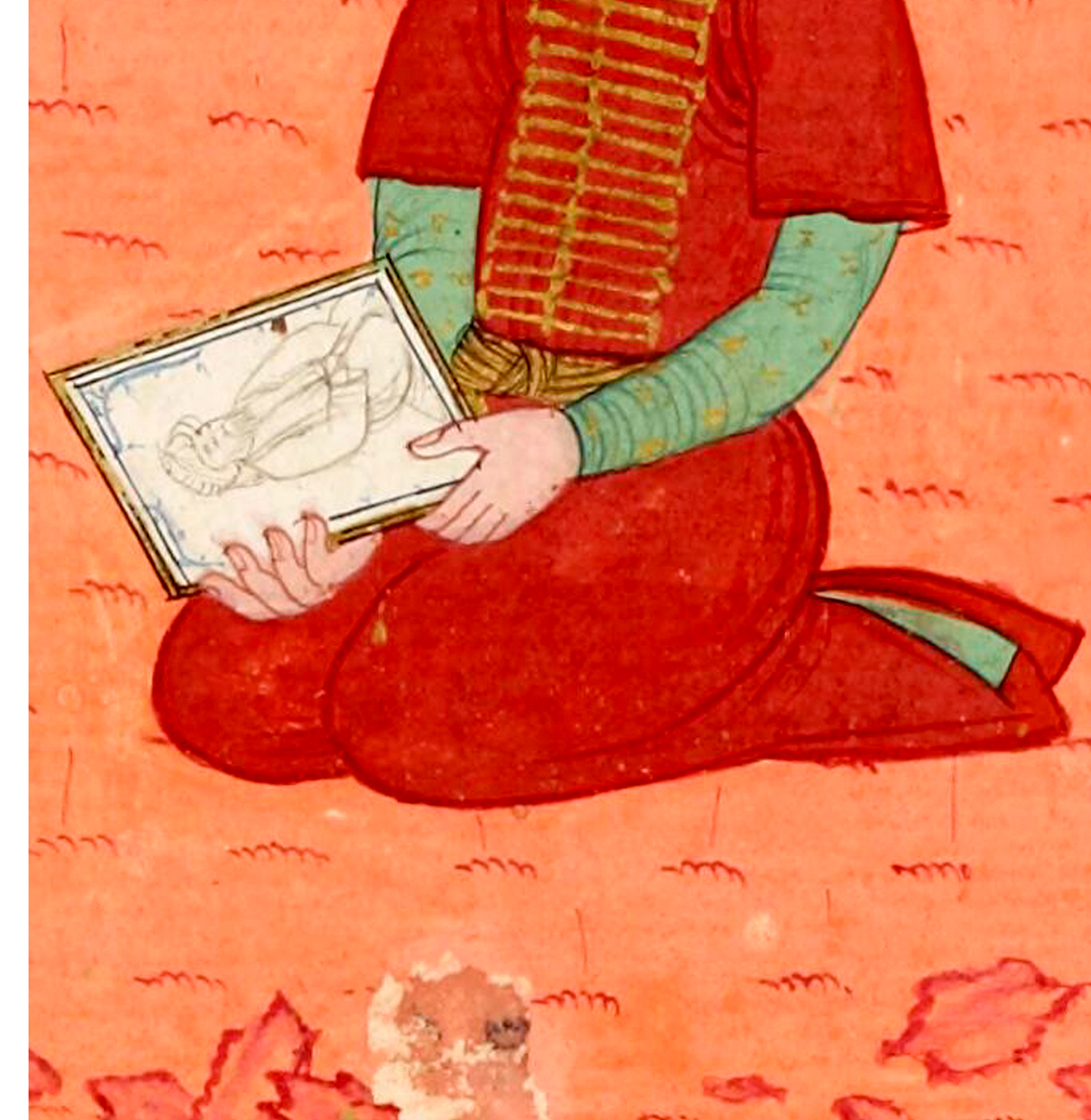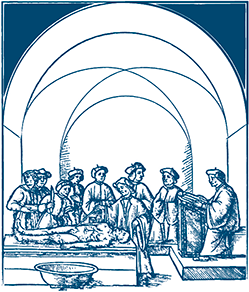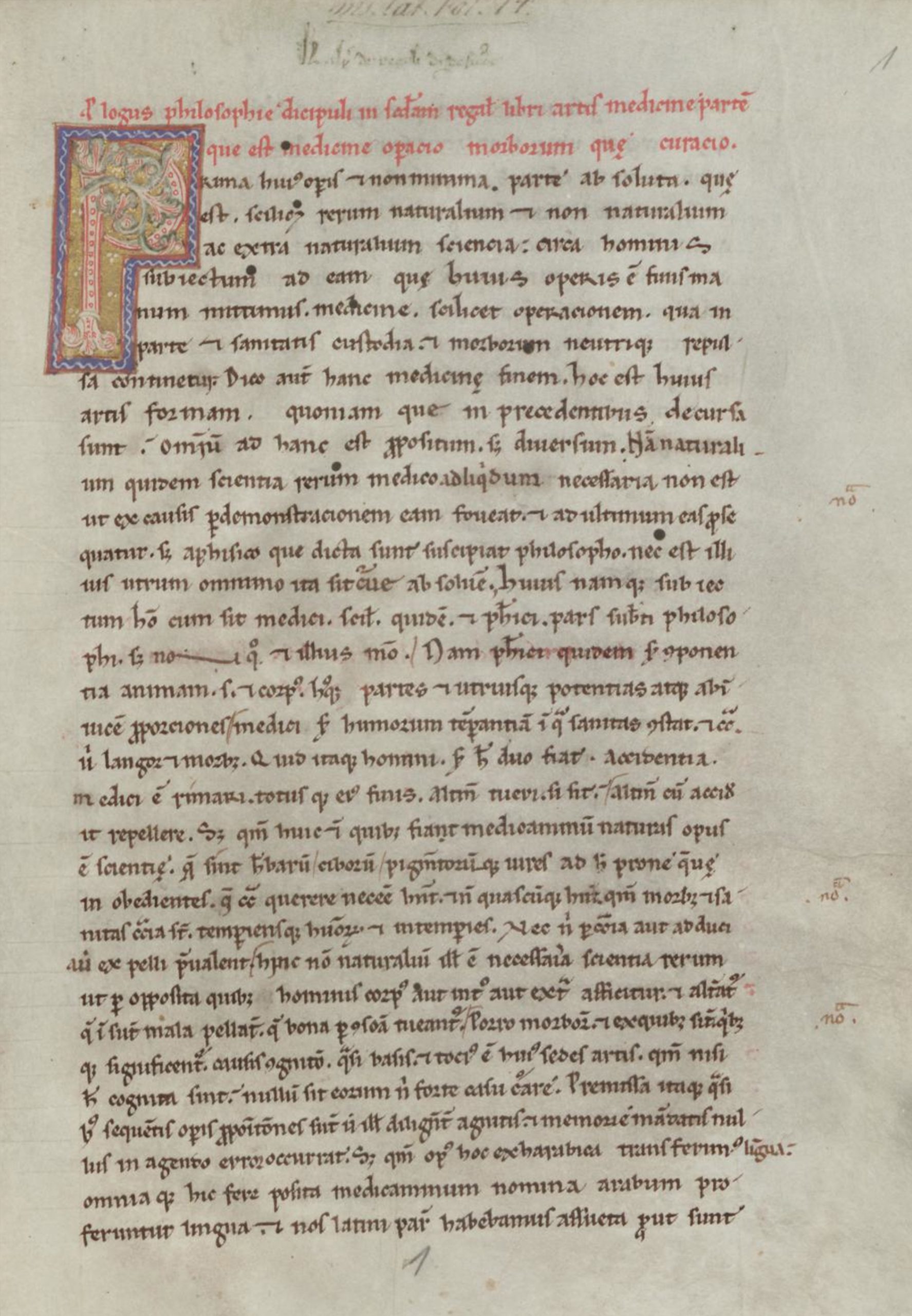The Ages of Man in the Kitāb al-Malakī


FORMA FLUENS
Histories of the Microcosm
The Ages of Man
in the Kitāb al-Malakī
The “Royal Book” and its Two
Latin Translations
Anna Gili
University of Padua
Comèl Grant

During the tenth century, Islamic medicine experienced a new flourishing: not only did the works translated from Greek into Arabic spread outside the center of Baġdād, thus also reaching the most peripheral regions of the dār al-ʾislām, but authors of Arabic language also began composing original works, mostly aiming to systematize and organize the inherited knowledge. The Kitāb al-Malakī (“Royal Book”, KM), written by the Zoroastrian physician ʿAlī ibn al-ʿAbbas al-Maǧūsī (AM), can be mentioned as a significant expression of this new development. We dispose only of scanty biographical information about AM, mainly derived from his own work and as such repeated by the medieval Arabic bio-bibliographers. In this context, it is sufficient to say that he was active during the middle and the second half of the tenth century in the province of Fārs, in that time ruled by the Buyid dynasty; the year 978 might be a terminus ante quem for the composition of his encyclopedia. AM benefited from ʿAḍud al-Dawla’s patronage and experienced a favorable climate for the development of science, since he was part of a group of intellectuals united by the common perception of being heirs to the heritage left by ancient Greece, rather than by religious affiliation [1].
The KM has already been described by Arabic physicians as the first comprehensive medical encyclopedia composed in Arabic language, a forerunner of Ibn Sīnā’s al-Qānūn fī al-ṭibb. The work, completely or partially, is preserved in more than eighty manuscripts. It is divided into two sections (ǧuzʾ) – theory and practice – and every one of them consists of ten books (maqāla), which are in turn divided into chapters (bāb). The theoretical section opens with a discussion of physiology and anatomy (book I-IV), goes on to describe the influence of external factors on the human body (book V) and etiology, symptomatology and nosology (books VI-IX); in conclusion, signs announcing a forthcoming disease are explained (book X). In the practical one, book I is about the regimen of healthy or weak bodies; book II about simple medicaments; books III-VIII about cures against various diseases; book IX about surgery; book X about compounded medicaments. Parts of the work have been translated into Hebrew and Greek, besides Latin.
Indeed, the translation of the KM marks the beginning of the transmission of Arabic-language medical science to the Latin Middle Ages. The encyclopedia was firstly translated by Constantine the African (CA) during the second half of the eleventh century, probably in both Salerno and Montecassino, under the title of Pantegni (PA). The second translation, entitled Liber Regalis (LR), appears to have been completed by Stephen the Philosopher (SP) by 1127 in Antioch, shortly after the Crusader reconquest [2]. This short article aims to analyze a specific section of the KM and how it has been rendered into Latin by the two translators: we will focus on the chapters discussing the ages of man and how the physician should deal with the passing of time on the human body. As all three works are, currently, not available in a critical edition, passages will be mentioned based on the direct consultation of manuscripts [3].
In KM’s theoretical section, book I, chapter 22 explains how bodily complexion changes as the human body grows. Here, a system of five principal human ages is outlined: childhood (ṣibā), divided into proper childhood (until 15 years of age) and adolescence (fatā, until 30); youth (šabāb, until 35); adulthood (kuhūl, until 60); old age (šayḫūḫa). The main source is certainly Galen’s De temperamentis, II.2 (= K I, 577-598), whose content is systematized and made more coherent by AM. To the physician’s eye, the interplay of qualities and humors is the tangible sign of temporality: while the fetus originates from hot and humid substances, old age is dominated by cold and dry, so that a progressive change towards this direction runs through human life.
SA’s translation of the passage does not present relevant peculiarities. On the contrary, when translating this passage, CA writes:
Omnis aetas quadrifariam apud medicos est divisa: aut enim pueritia, aut iuventus, aut senectus, aut senium. Puerorum corpora in augmento sunt posita usque ad annos XXX; ut enim fatentur phisici, infantia est annorum XV …
Anna Gili is a PhD student in the Doctoral Programme in Linguistic, Philological and Literary Sciences at the University of Padua. She obtained a Master’s Degree in Classical Philology and Ancient History at the University of Padua and, at the same time, attended the Galileiana School of Higher Education. Her main research interest is the transmission of medical science from Greek into Arabic and from Arabic into Latin during the Middle Ages. Her PhD project aims to critically edit and study the books about pathology in the Kitāb al-Malakī, composed by ʿAlī ibn al-ʿAbbas al-Maǧūsī, and in its two Latin translations – the “Pantegni”, by Constantine the African, and the “Liber Regalis”, by Stephen of Antioch.
The underlined expressions do not appear in the Arabic original, and have therefore been added by CA. Clearly, he wants the readers to notice that the doctrine regarding the ages of man as explained in the PA is something pertaining to medical science alone, and thus might differ from the more traditional one common in the Latin world. In fact, if this chapter is compared with Isidorus’ Etymologiae, XI.2, where the gradus aetatis are described in a more traditional way, the difference is evident: on one side, we have an essentially medical writing, influenced by the Galenic tradition, and on the other, a text devoid of technicalities, explicitly inspired by the philosophi – from them CA might have wanted to differentiate himself in that he speaks for medici and phisici.
This comparison becomes more interesting if we also consider KM’s practical section and, specifically, book I, chapters 20-24, where the regimen appropriate for every age is described. Based on sources such as Hippocrates’ Aphorismi, Galen’s De sanitate tuenda, Oribasius’ Collectiones and Paulus Aegineta’s Pragmateia, AM shows the medical students how the physicians must either accompany or counteract the effects of ageing. Firstly, in chapter 20 a new age is introduced, that is the one of newborn babies (ṭifl); the following table will summarize how CA and SP have decided to translate into Latin the designation of every age:
We can notice a certain incoherence in CA’s choices, mainly regarding the use of infantia; on the other hand, SA manages to achieve a two-way correspondence between Arabic and Latin lexicon. Moreover, the terms used in the LR correspond almost entirely with the ones of the Etymologiae, so that the doctrine of Arabic origin is made familiar and acceptable to the Latin reader, in that the vocabulary he is accustomed to is associated with an entirely new medical content.
As for the translation of these chapters, SA’s text renders faithfully the Arabic original, while the PA presents a more complex situation. In the KM, chapters 20 and 22, respectively concerning regimens for newborn babies and for babies after weaning, do not contain merely medical prescriptions, such as the ones regarding medicaments, cleansing, bathing, anointing, or curing specific diseases, but “care” is understood in a more general way. The physician should pay attention, for instance, to what causes babies to cry, to how they learn to speak and walk, and, as the child grows into an adolescent, he should monitor his moral attitude and his education, encourage him to play with a companion and to undertake valorous, vigorous actions. Thereafter, chapters 23 and 24 focus mainly on therapeutical prescriptions for adults and old people, leaving aside other fields of care. Interestingly, in the PA, chapters 23 and 24 are rendered rather faithfully, so that AM’s instructions are precisely conveyed to Latin readers. On the contrary, when translating chapters 20 and 22, CA has decided to omit all passages not dealing with a strictly medical regimen, such as diet, baths, anointments, physical activity, and specifically emphasizes the sentences referring to the deleterious effects of wine on growth [4].
Therefore, we can affirm that, when translating KM’s theoretical section about the ages of man, the Latin translators try to fit the ideas conveyed by the Arabic text into their tradition: what they achieve is a form of innovation through intelligent adaptation. Specifically, CA decides to underline that the content of the PA might appear peculiar as it pertains to the medical discipline – a discipline not much developed in the Latin West and, as such, not familiar for most readers; on the other hand, SP models his lexicon on that already belonging to Isidore. In the practical section, SP maintains his literal approach, while CA chooses the knowledge he wants to transfer to the Latin world: in the PA, there is no space for the passages concerning “care” for the person in his integrity. This suggests that he did not consider these areas as relevant for the physicians, as part of their responsibilities, or as useful for his Latin readers, who, to simplify, might already know how to educate children and adolescents, but needed to learn which medical regimen was suitable for them.
In conclusion, my focus on a selected case study proves how the analysis of translations makes it possible to observe the way medical doctrines transform from one place and time to another. Most notably, the comparison of the KM and his two Latin translations helps to shed light on how, with the first introduction of a medical science of allogenic origin in the Latin world, an attempt was made to make it comprehensible to readers and adapt it to their needs, without losing its novel elements.










